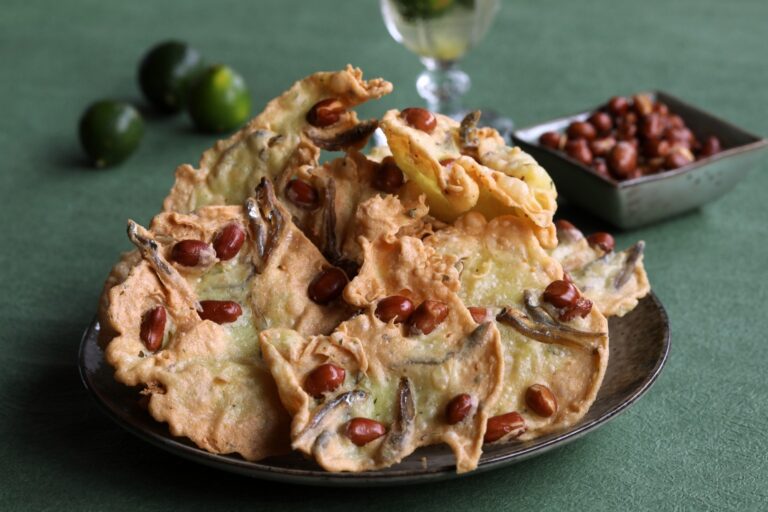Rempeyek: The Popular Crispy Javanese Snack in Malaysia
Rempeyek is a popular traditional snack that holds a special place in the hearts of many, particularly among the Javanese community in Malaysia. With its crispy texture and flavourful blend of spices, Rempeyek is a must-have treat, not only during Hari Raya but for afternoon tea or long road trips. These crispy and savoury crackers, traditionally made with peanuts and anchovies, perfectly complement rice-based meals and add a satisfying crunch.
So, what exactly is Rempeyek? It is a deep-fried traditional cracker commonly found in Indonesia and Malaysia. The batter is made from a mixture of spices, rice flour, and coconut milk, creating a crispy coating that encases a variety of delicious ingredients. Common additions to Rempeyek include peanuts, anchovies, shrimps, and beans like green beans or soybeans.
The history of Rempeyek dates back to the early 19th century when Javanese immigrants brought this flavourful snack to Malaya during their migrations. The name “Rempeyek” derives from the Javanese term “peyek,” which refers to the sound of a breaking cracker, indicating its crispiness.
To create the signature crispiness and flavor of Rempeyek, the batter is meticulously prepared. A mixture of rice flour, water, limestone paste and coconut milk forms the base, giving it a smooth and creamy texture. A blend of spices, including fennel seeds, cumin, ginger, galangal, coriander, shallots, garlic, and dried shrimp, is ground to perfection. These spices infuse the batter with a tantalizing aroma that whets the appetite. The limestone paste ensures the Rempeyek achieves its desired crispiness.
Using a special metal ladle mold, the batter is carefully fried until it turns golden brown and transforms into a crispy cracker. Toppings like peanuts, anchovies, or shrimp are sprinkled onto the batter, creating a delightful combination of flavours and textures. Controlling the heat is crucial throughout the frying process. Moderate heat ensures that the batter cooks evenly without burning, while the peanuts and anchovies achieve the desired level of crunchiness. It’s essential to avoid overcrowding the pan, allowing each piece to cook to perfection. After frying, let the Rempeyek cool completely before storing them in airtight containers lined with parchment paper, preserving their crispy texture for an extended period.
Traditional Rempeyek is often irregular in shape and was traditionally homemade for sharing among family and friends. Due to the high demand for Rempeyek, many businesses have established manufacturing sites equipped with specialized equipment to produce large quantities of these delectable snacks efficiently. Today, Rempeyek can be found sold by street vendors, supermarkets and in convenience stores throughout Malaysia.
Due to its popularity and adaptability to the multicultural community, various types of Rempeyek have emerged with unique flavour combinations to cater to different tastes. Rempeyek comes in a variety of versions based on the type of legume used, such as peanuts, green beans, soybeans, or dhall. The most commonly found Rempeyek variety in Malaysia is Rempeyek Kacang (peanut). Rempeyek made with green beans, soybeans, or dhall is known as tumpi within the Javanese community. Rempeyek can also be prepared with sunflower seeds, cashew, spinach leaves or even insects such as crickets and termites!





